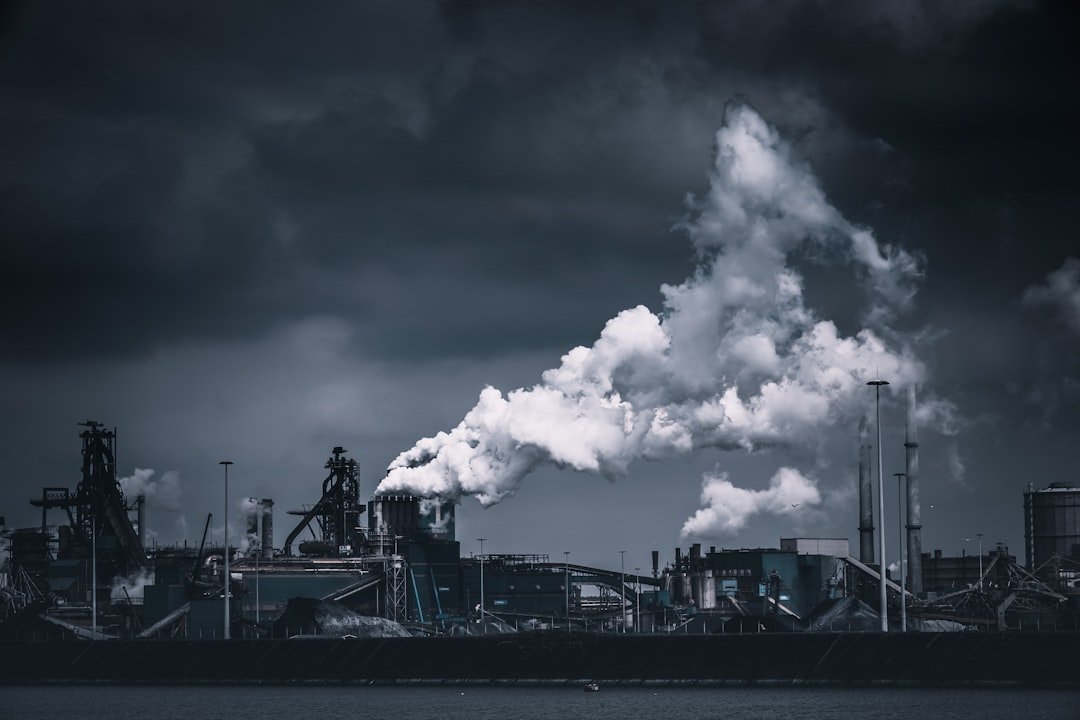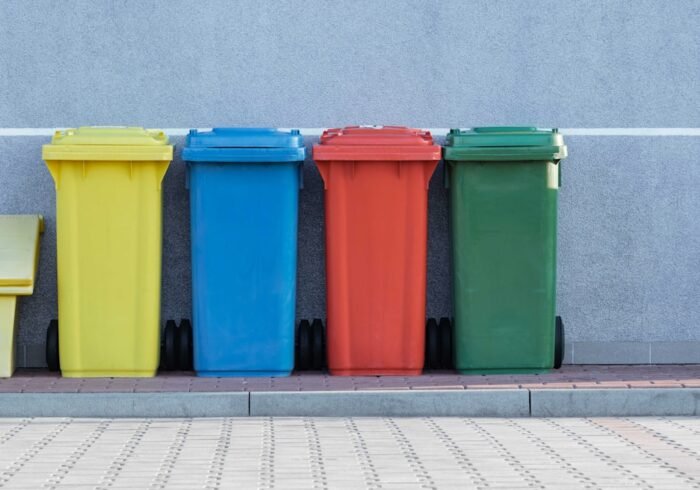The Effects of Air Pollution on Health One of the most important public health issues of the twenty-first century is air pollution. There are significant and wide-ranging negative impacts of air pollution on human health. Air pollution exposure has been directly linked in numerous studies to a number of health problems, such as heart problems, respiratory illnesses, and even early mortality. Among the most dangerous pollutants are sulfur dioxide (SO2), nitrogen dioxide (NO2), & fine particulate matter (PM2.5), which can seep deeply into the lungs and enter the bloodstream.
Key Takeaways
- Air pollution has a significant impact on respiratory and cardiovascular health, leading to increased risk of diseases such as asthma, lung cancer, and heart disease.
- Common sources of air pollution include vehicle emissions, industrial processes, and the burning of fossil fuels for energy production.
- Air pollution can lead to environmental degradation, including acid rain, smog formation, and damage to ecosystems and wildlife.
- Visual representations of air pollution, such as satellite imagery and air quality indexes, help to raise awareness and monitor the extent of pollution in different regions.
- Air pollution is a global issue, with both local and transboundary effects, requiring coordinated efforts and international cooperation to address.
Millions of people may suffer greatly from chronic illnesses like heart disease, bronchitis, and asthma as a result of this infiltration. Also, the effects of air pollution are disproportionately felt by vulnerable groups, such as children, the elderly, and people with underlying medical conditions. Children are especially vulnerable because of their developing respiratory systems, which can be permanently damaged by exposure to airborne pollutants. The urgent need for efficient interventions is highlighted by the World Health Organization’s (WHO) estimate that air pollution causes about 7 million premature deaths annually. It is also important to consider the psychological effects of living in polluted environments; stress and anxiety brought on by health issues can make the burden on people and communities even greater. The Sources of Air Pollution Both natural and man-made activities are causes of air pollution, which has many different and complex origins.
One of the main causes is industrial emissions, which come from factories that release a variety of dangerous chemicals into the atmosphere. There are serious health risks associated with these emissions, which frequently include particulate matter, heavy metals, & volatile organic compounds (VOCs). Transportation is also a significant contributor to air pollution since cars release carbon monoxide (CO) and nitrogen oxides (NOx) as byproducts of burning fuel. Due to heavy traffic & insufficient public transit, urban areas in particular experience high levels of vehicle emissions. Air pollution is also greatly influenced by agricultural practices.
Ammonia and other chemicals are released into the air during the use of fertilizers and pesticides, which helps to create secondary pollutants like fine particulate matter. Air pollution levels can also momentarily rise as a result of natural occurrences like volcanic eruptions and wildfires.
The Impact of Air Pollution on the Environment Air pollution has a substantial effect on the environment in addition to human health. Degradation of air quality is one of the most obvious consequences, as it can result in acid rain, a phenomenon brought on by sulfur dioxide and nitrogen oxides reacting with atmospheric water vapor. Acid rain has the potential to seriously disrupt ecosystems, destroying aquatic life in lakes and rivers and influencing plant and soil health.
| City | PM2.5 Level (µg/m³) | Population Affected |
|---|---|---|
| Delhi | 143 | 20 million |
| Beijing | 56 | 18 million |
| Los Angeles | 12 | 10 million |
Acid rain frequently results in stunted growth and increased susceptibility to diseases and pests in forests. Also, the emission of greenhouse gases like carbon dioxide (CO2) and methane (CH4) from air pollution is a contributing factor to climate change. Global warming and its related effects, such as rising sea levels and extreme weather events, are caused by these gases’ ability to trap heat in the atmosphere. A vicious cycle is produced by the interaction of air pollution & climate change; as temperatures rise, ground-level ozone formation increases, which can worsen air quality.
This interdependence highlights the pressing need for comprehensive strategies for environmental preservation that take climate resilience & air quality into account. The Graphic Representation of Air Pollution Graphic representations of air pollution are effective instruments for bringing attention to this important problem. Pictures of foggy landscapes or cities engulfed in smog serve as a stark reminder of the reality of polluted environments. These images have the power to arouse intense emotions in viewers, inspiring them to take action against air pollution. Infographics that show air quality statistics can also effectively convey the problem’s seriousness & help the general public relate to it.
Further enhancing public awareness of the effects of air pollution are artistic representations. Artists frequently use their medium to highlight the beauty that is in danger because of human activity by contrasting pristine & polluted environments. Films and documentaries about air pollution can tell a story that emotionally engages audiences and makes them feel that change is urgently needed. Using visual storytelling, advocates can inspire group action and involve a wider audience in air quality discussions. Air pollution is a worldwide problem that impacts nations all over the world; it is not limited by national boundaries.
Over 90% of people reside in areas where the air quality is above acceptable limits, according to the WHO. Because of their rapid industrialization, urbanization, and loose environmental regulations, developing countries are frequently the ones who suffer the most from this crisis. Cities like Beijing, Mexico City, & Delhi are often among the most polluted in the world, posing serious health risks to their citizens on a daily basis. However, the effects of air pollution are not limited to developed nations.
Because of industrial activity and traffic congestion, urban centers in North America and Europe have higher pollution levels. Because air pollution is transboundary, emissions from one area can have an impact on the quality of the air in another, making national efforts to address the problem more challenging. Addressing this global issue requires international cooperation; accords like the Paris Agreement emphasize the necessity of group efforts to cut emissions & enhance air quality globally. Attempts to Combat Air Pollution In reaction to the escalating air pollution crisis, communities, organizations, and governments have launched a number of initiatives to lessen its impacts.
Regulatory actions are essential for reducing emissions from automobiles and industries. Over time, improvements in urban air quality have been brought about by the implementation of stricter air quality standards and emissions limits in many countries. Low-emission zones in cities, for example, promote the use of electric vehicles and public transportation while prohibiting the entry of high-polluting vehicles. In order to combat air pollution, public awareness campaigns are also essential. Education initiatives that educate the public about the causes & consequences of air pollution can enable people to make wise decisions about their everyday lives.
People around the world are calling on their governments to take action in support of grassroots campaigns that promote cleaner air. These group initiatives show that when communities band together for a common goal, change is achievable. The Role of Individuals in Reducing Air Pollution Individual actions are important in lowering emissions, but systemic changes are necessary for tackling air pollution on a large scale. Together, small lifestyle adjustments can result in significant air quality improvements.
For example, reducing vehicle emissions can be achieved by choosing to drive less and instead use public transportation, carpool, or bicycle. Individuals can also help by reducing their energy use at home. For example, using energy-efficient appliances or turning off lights when not in use can reduce the demand for electricity produced from fossil fuels. Also, people can promote cleaner air by taking part in neighborhood projects or endorsing laws that lower pollution.
Voices demanding change can be amplified by interacting with neighborhood organizations that address environmental issues. People can contribute to larger efforts to combat air pollution by making thoughtful decisions in their daily lives and inspiring others to follow suit. A Call to Action Regarding the Future of Air Pollution Although the future of air pollution is still unknown, it is obvious that urgent action is required to protect the environment and public health. The risk of deteriorating air quality is significant as urban populations and industrial activity continue to rise. Governments must make clean air projects a top priority by boosting public transit, enforcing stronger emissions laws, and investing in renewable energy sources.
Long-term change also depends on encouraging a culture of environmental stewardship in people. Attitudes toward sustainability are greatly influenced by education; including environmental education in school curricula can encourage the next generation to give clean air projects top priority. Communities have the power to effect significant change locally, nationally, & internationally when they band together to promote cleaner environments. In conclusion, combating air pollution necessitates a multipronged strategy that includes international collaboration, community involvement, policy reforms, & personal accountability. Action must be taken immediately in order to guarantee a healthier future for all living things on Earth by collaborating to create cleaner air.
If you are interested in learning more about the ecological issues related to air pollution images and pictures, I recommend checking out the article Facing Climate Crisis: Ecological Issues Today. This article delves into the current state of our environment and the impact of climate change on our planet. It provides valuable insights into the challenges we face and the urgent need for action to address these issues.



